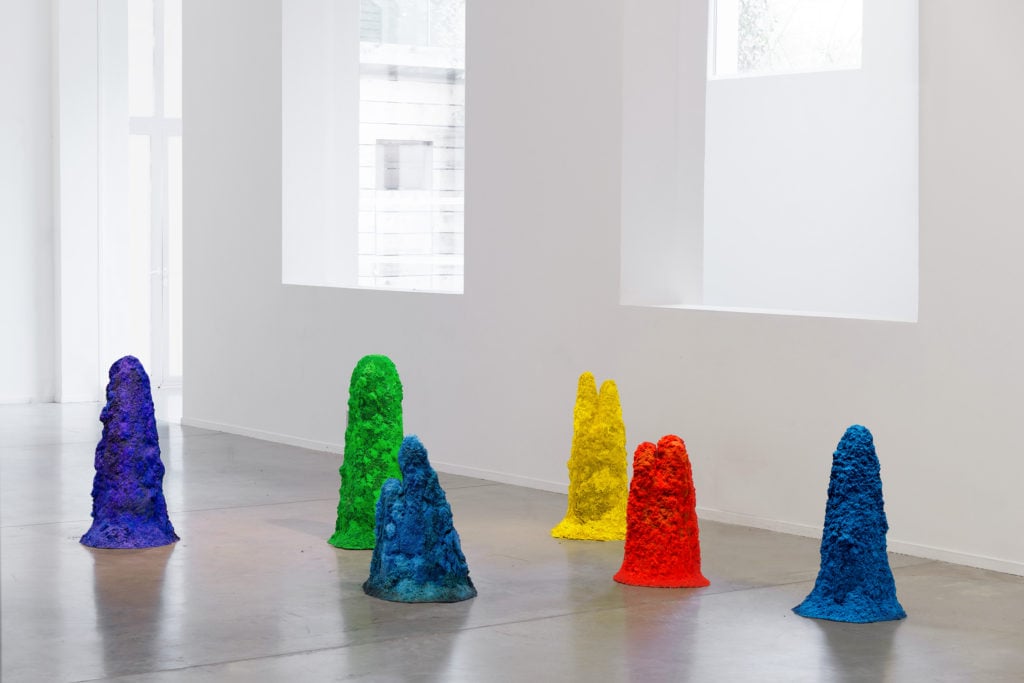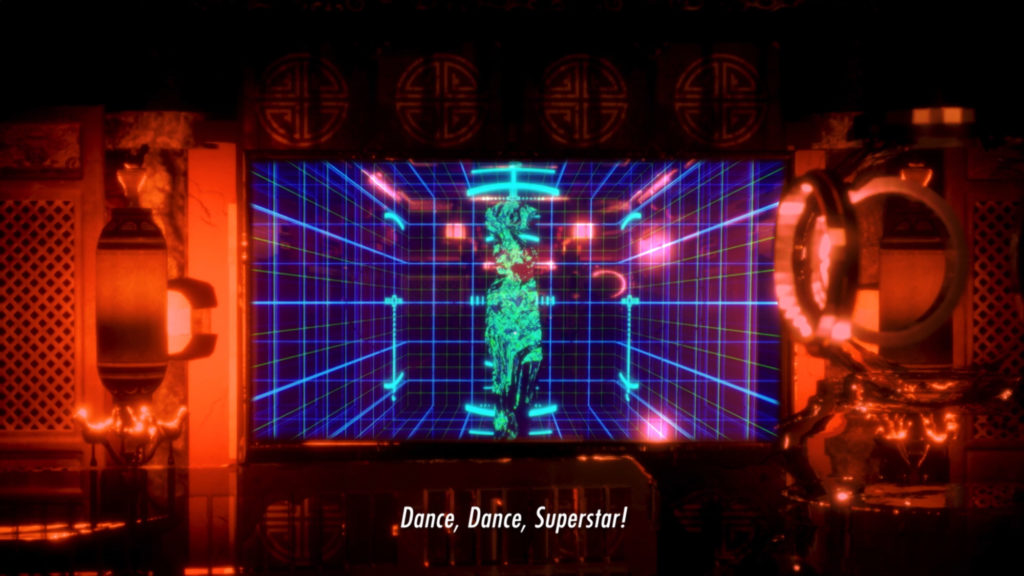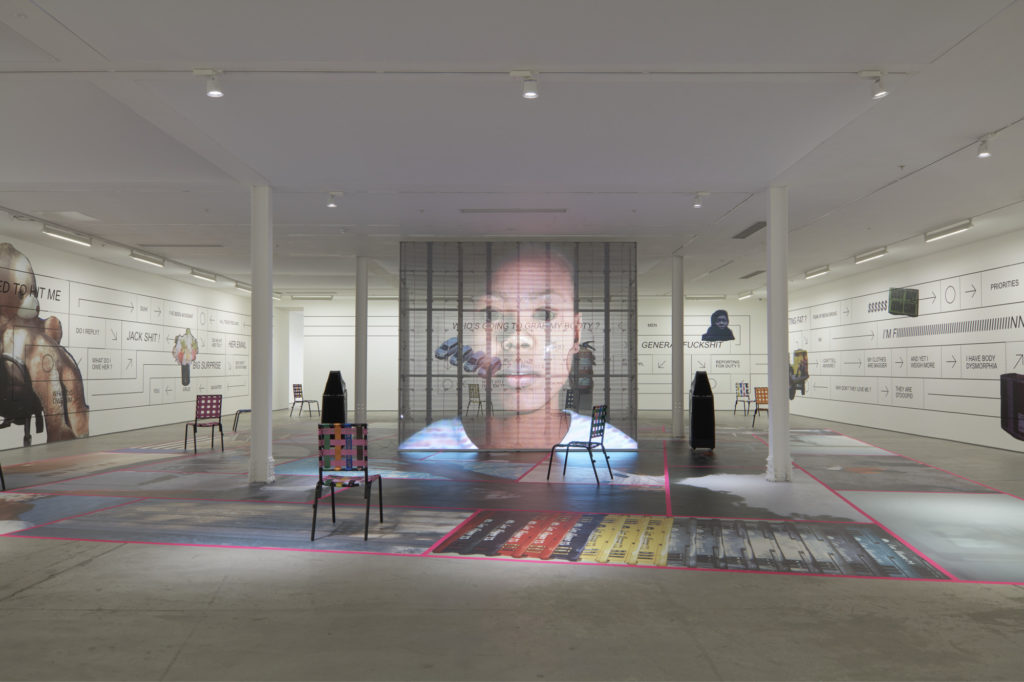Art & Exhibitions
A High-Tech Museum Show in San Francisco Will Tackle Algorithmic Bias and the Low-Wage AI Economy—Just a Stone’s Throw From Silicon Valley
"Uncanny Valley: Being Human in the Age of AI" opens at the de Young Museum in February.

"Uncanny Valley: Being Human in the Age of AI" opens at the de Young Museum in February.

Sarah Cascone

Artificial intelligence: Is it a tool with limitless potential for progress, or a terrifying dystopian future waiting to happen?
Artists including Trevor Paglen, Hito Steyerl, and Pierre Huyghe will consider the implications of AI and humankind’s relationships with intelligent machines in a show next year at the de Young Museum in San Francisco.
“Technology is changing our world, with artificial intelligence both a new frontier of possibility but also a development fraught with anxiety,” Thomas P. Campbell, director and CEO of the Fine Arts Museums of San Francisco, said in statement. The museum, just a stone’s throw from Silicon Valley, “the ground zero of emerging technology,” is an ideal venue to engage artists in this increasingly important conversation, he added.
The exhibition takes its title—“Uncanny Valley: Being Human in the Age of AI”—from the term coined in 1970 by Japanese engineer Masahiro Mori to describe the sense of unease we feel when machines or robots too closely resemble human beings in appearance. But whereas in the past this phenomenon has been most commonly encountered in computer-animated movie characters—like 2004’s The Polar Express—new technologies such as machine learning have allowed artificial intelligence to mimic human behavior in increasingly convincing fashion.
“As our lives are increasingly organized and shaped by algorithms that track, collect, evaluate, and monetize our data, the uncanny valley has grown to encompass the invisible mechanisms of behavioral engineering and automation,” said exhibition organizer Claudia Schmuckli in a statement.

Lawrence Lek, AIDOL (2019), video still. Image ©Lawrence Lek, courtesy Sadie Coles HQ, London/the Fine Arts Museums of San Francisco.
In fact, the invisible mechanisms that power artificial intelligence often involve underpaid human labor, such as people being paid pennies to answer questions on Amazon Mechanical Turk, which will train computer programs.
Artist Agnieszka Kurant critiques the growing use of these online laborers in her sculpture A.A.I. (artificial artificial intelligence). An installation of colorful sand-termite mounds, embellished with gold, glitter, and crystals, makes visible the plight of these workers, who are paid sub-minimum wages. The work raises the question of how the rise of artificial intelligence will continue to shape the global economy.

Martine Syms, installation view of Mythiccbeing at Sadie Coles HQ, London. Photo by Robert Glowacki, courtesy of Sadie Coles HQ, London, and the Fine Arts Museums of San Francisco.
And as these workers train artificial intelligence, they pass along their own implicit biases, perpetuating stereotypes. The show will include Trevor Paglen and AI researcher Kate Crawford’s ImageNet, a visual data training set that went viral after labeling photographs of people with racist slurs. As a counterpoint, the museum also offers Martine Syms’s Mythiccbeing, an avatar of the artist that responds to queries much like Siri or Alexa, but by pointing out instances of racial inequality and social injustice.
The artists, Schmuckli added, are “paying close attention to the imminent and nuanced realities of AI’s possibilities and pitfalls.”
See the full list of participating artists below.
Zach Blas, b. 1981, Point Pleasant, West Virginia. Lives in London.
Ian Cheng, b. 1984, Los Angeles. Lives in New York.
Simon Denny, b. 1982, Auckland. Lives in Berlin.
Stephanie Dinkins. Lives in Brooklyn.
Forensic Architecture, founded 2010, London.
Lynn Hershman Leeson, b. 1941, Cleveland. Lives in San Francisco.
Pierre Huyghe, b. 1962, Paris. Lives in New York.
Christopher Kulendran Thomas, b. 1979, London. Lives in London and Berlin.
Agnieszka Kurant, b. 1978, Lodz, Poland. Lives in New York City.
Lawrence Lek, b. 1982, Frankfurt. Lives in London.
Trevor Paglen, b. 1974, Camp Springs, Maryland. Lives in Berlin.
Hito Steyerl, b. 1966, Munich. Lives in Berlin.
Martine Syms, b. 1988, Los Angeles. Lives in Los Angeles.
“Uncanny Valley: Being Human in the Age of AI” will be on view at the Fine Arts Museums of San Francisco’s de Young museum, 50 Hagiwara Tea Garden Drive, San Francisco, California, February 22–October 25, 2020